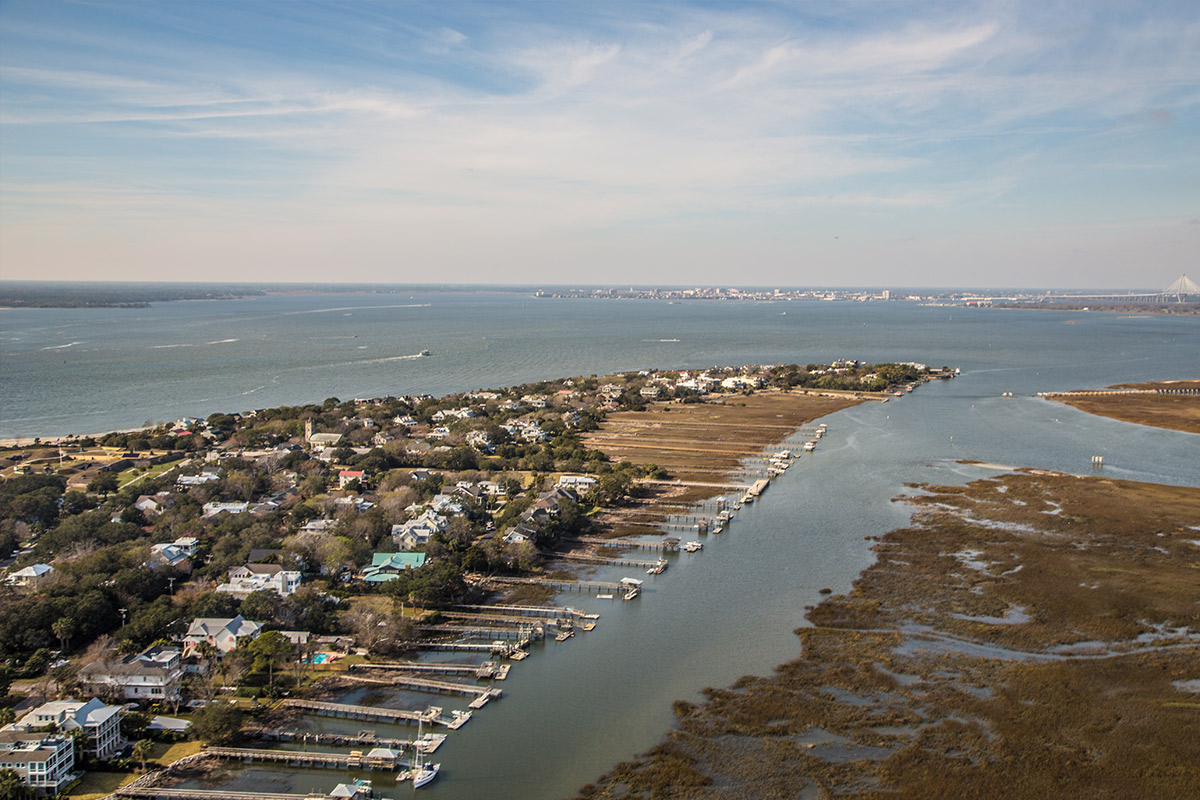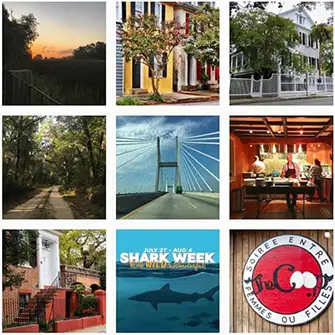
A Brief History of Sullivan's Island, SC
“I sat up a bit and looked out over the railing toward the ocean. The sight always took my breath away. The dark green velvet of the front yard contrasted with the radiant white of the sand dunes that separated the family’s property from the beach. The white mounds cut a wavy line across the deep blue of the Atlantic, like the finger paint of a child in his first attempt to create something beautiful. Feathery sea oats grew in clumps across their tops. The water glistened and the sun danced on the phosphorus. An illusory field of diamonds.”
― Dorothea Benton Frank, Sullivan's Island
If you find yourself walking along the High Battery in Downtown Charleston towards the end of the peninsula, look left. There, in the mouth of the Charleston Harbor, you’ll see the black and white lighthouse of Sullivan’s Island.
Known by locals as the Charleston Light, the Sullivan’s Island Lighthouse was built in the early 1960s to replace the light on Morris Island, which was in danger of being destroyed by erosion and has since been restored. The Charleston Light is still a working lighthouse, continuing to serve as a beacon to welcome ships into the Charleston Harbor.
Though a popular local beach destination today, Sullivan’s Island has played an important part in Charleston’s history since the first English settlers arrived in the late 17th century. In fact, Florence O’Sullivan, for whom the island is named, served as a captain on one of the first ships to arrive in the area. Captain O’Sullivan was appointed to the island in 1674 in order to take charge of a signal cannon that, when fired, would warn those in Charles Town of ships coming into the harbor.
From 1707 to 1799, any ships coming into Charleston that held passengers or crew members suffering from illness would first be quarantined on Sullivan’s Island in order to prevent the spread of deadly diseases like smallpox and cholera. The sick would be quarantined either onboard ship or in “pest houses,” often for a period of at least ten days.
Many of the ships coming into Charleston throughout the 1700s held enslaved Africans, and disease ran rampant in the inhuman conditions captives were forced to endure aboard these slave ships. According to historians, Sullivan’s Island served as the entry point for approximately forty percent of the slaves brought into North America between 1619 and 1808. If you want to learn more about the island’s role in the African slave trade, the “African Passages” exhibit exhibit at the Fort Moultrie Museum tells the painful story through charcoal works, Gullah artwork, a collection of artifacts, and the personal story of a young slave girl.
Sullivan’s not only served as a quarantine station, but also as an important military outpost in the defense of Charleston both in the American Revolutionary War and the Civil War. In 1776, the British Royal Navy attacked the island in an effort to take Charleston. Fort Sullivan, as the fort was called then, was under the command of Colonel William Moultrie and was still incomplete when the British attacked. However, the soft palmetto logs that made up the existing walls were able to absorb incoming cannon fire, and the only casualties of that battle came from cannon that made it over the wall. After a nine-hour battle, the British retreated, and Charleston was safe from British occupation for another four years. Moultrie and his men attributed their victory to the palmetto logs that saved them from cannon shot that day, and after the Battle of Sullivan’s Island, a flag featuring a white palmetto tree became a symbol behind which the men could rally. Today, you’ll find this same symbol on the state flag of South Carolina.
After the Revolutionary War, the fort was renamed Fort Moultrie in honor of the colonel who defended it during the Battle of Sullivan’s Island. Perhaps the most famous person to spend time at Fort Moultrie, however, was Edgar Allan Poe. Poe was stationed at the fort for only 13 months from 1827-1828, but he seems to have left a lasting impression on Sullivan’s Island. Not far from Fort Moultrie, in fact, right down on Middle Street, you’ll find Poe’s Tavern.
Poe probably never ate there, but that doesn’t mean you shouldn’t. Named in honor of the author, Poe’s boasts delicious burgers, fish tacos, and cool salads and sandwiches that are sure to hit the spot after a hot day on the beach. The entire restaurant is decorated with artistic renderings of Edgar Allan Poe and his works, including his short story “The Gold Bug,” which was inspired by Poe’s time on the island.
If you’re looking for a place to eat on Sullivan’s Island and Poe’s doesn’t do it for you (or you’ve already been and want to try something else), just turn around! Most of the island’s other restaurants, with the exception of Sullivan’s and the Obstinate Daughter, which are a little farther down Middle, are lined up right across the street.
After eating at one of the great restaurants along Middle Street, visiting Fort Moultrie and the Charleston Light, why not relax in the sand or splash around in the surf out at the beach? The island is mostly made up of part- and full-time residents and locals coming in for the day. There are some short-term vacation rentals on Sullivan’s Island, but you won’t find any hotels here. But don’t worry! Sullivan’s is just a short drive from Mount Pleasant and Downtown Charleston, making it the perfect beach for a day-trip.
If you’re looking for something a little more adrenaline-inducing than sitting on the beach while you’re on Sullivan’s, Sealand Adventure Sports offers SUP tours and rentals, kiteboarding lessons, and bike rentals so that you can cruise the island at your own pace. There are also a few places over the bridge in Mount Pleasant that offer similar services, like Nature Adventures, the go-to kayak and paddle board rental and tour company east of the Cooper. Their tours take visitors up Shem Creek (with a paddle) and meander around other nearby waterways. You may even see some dolphins!
The laid-back atmosphere, rich history, and beautiful landscape of Sullivan’s Island makes this destination one that the whole family can enjoy and one they’ll certainly remember.



